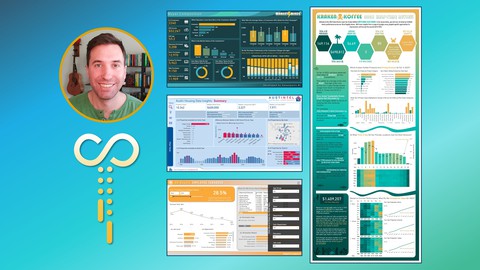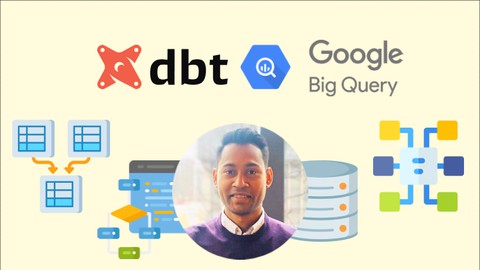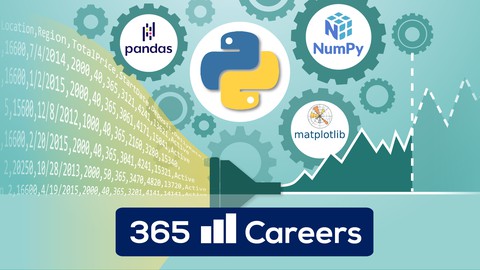Elasticsearch 8 and the Elastic Stack: In Depth and Hands On
Loại khoá học: Software Engineering
Complete Elastic search tutorial - search, analyze, and visualize big data with Elasticsearch, Kibana, Logstash, & Beats
Mô tả
Elasticsearch and the Elastic Stack are important tools for managing massive data. You need to know the problems it solves and how it works to design the best systems, and be the most valuable engineer you can be.
Elasticsearch 8 is a powerful tool for analyzing big data sets in a matter of milliseconds! It’s increasingly popular technology for powering search and analytics on big websites, and a valuable skill to have in today's job market. This course covers it all, from installation to operations. Learn how to use Elasticsearch 8 and implement it in your work within the next few days.
We've teamed up with Coralogix to co-produce the most comprehensive Elastic Stack course we've seen— with over 100 lectures including 15 hours of video.
We'll show you how to set up search indices on an Elasticsearch 8 cluster (if you need Elasticsearch 6 or 7 - we have other courses on that), and query that data in many different ways. Fuzzy searches, partial matches, search-as-you-type, pagination, sorting - you name it. And it's not just theory, every lesson has hands-on examples where you'll practice each skill using a virtual machine running Elasticsearch on your own PC.
We'll explore what's new in Elasticsearch 8 and illustrate all the new syntax requirements of Elasticsearch commands, now that things deprecated through the Elasticsearch 7 have been removed. Almost every hands-on activity has been re-recorded to ensure compatibility with Elasticsearch 8.
We cover, in depth, the often-overlooked problem of importing data into an Elasticsearch index. Whether it's via raw RESTful queries, scripts using Elasticsearch API's, or integration with other "big data" systems like Spark and Kafka - you'll see many ways to get Elasticsearch started from large, existing data sets at scale. We'll also stream data into Elasticsearch using Logstash and Filebeat - commonly referred to as the "ELK Stack" (Elasticsearch / Logstash / Kibana) or the "Elastic Stack".
Elasticsearch isn't just for search anymore - it has powerful aggregation capabilities for structured data, which allows you to glean new insights from your indexed data. We'll bucket and analyze data using Elasticsearch, and visualize it using the Elastic Stack's web UI, Kibana and Kibana Lens.
You'll learn how to manage operations on your Elastic Stack, monitoring your cluster's health, and how to perform operational tasks like scaling up your cluster, and doing rolling restarts. We'll also spin up Elasticsearch clusters in the cloud using Amazon Opensearch Service and the Elastic Cloud.
Elasticsearch is positioning itself to be a much faster alternative to Hadoop, Spark, and Flink for many common data analysis requirements. It's an important tool to understand, and it's easy to use! Dive in with me and I'll show you what it's all about.
Bạn sẽ học được gì
Install and configure Elasticsearch 7 on a cluster
Create search indices and mappings
Search full-text and structured data in several different ways
Import data into Elasticsearch using various techniques
Integrate Elasticsearch with other systems, such as Spark, Kafka, relational databases, S3, and more
Aggregate structured data using buckets and metrics
Use Logstash and the "ELK stack" to import streaming log data into Elasticsearch
Use Filebeats and the Elastic Stack to import streaming data at scale
Analyze and visualize data in Elasticsearch using Kibana
Manage operations on production Elasticsearch clusters
Use cloud-based solutions including Amazon's Elasticsearch Service and Elastic Cloud
Yêu cầu
- You need access to a Windows, Mac, or Ubuntu PC with 20GB of free disk space
- You should have some familiarity with web services and REST
- Some familiarity with Linux will be helpful
- Exposure to JSON-formatted data will help
Nội dung khoá học
Viết Bình Luận
Khoá học liên quan

Đăng ký get khoá học Udemy - Unica - Gitiho giá chỉ 50k!
Get khoá học giá rẻ ngay trước khi bị fix.


















Đánh giá của học viên
Bình luận khách hàng